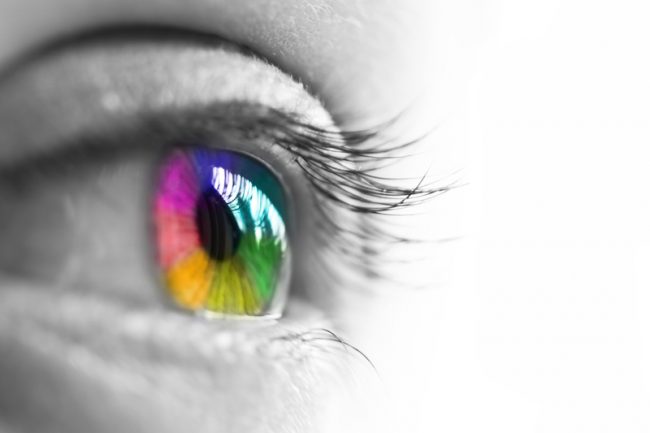Seeing color is a complex process that involves the eyes, brain, and the properties of light. When light strikes an object, certain wavelengths are absorbed by the object, while others are reflected. The color that we perceive is the color of the light that is reflected back to our eyes.
The eyes have specialized cells called cones and rods that are responsible for detecting color and light. Cones are located in the center of the retina and are responsible for detecting color. Rods are located around the edges of the retina and are responsible for detecting light in low-light conditions.
When light enters the eye, it passes through the cornea, which helps to focus the light, and then through the pupil, which controls the amount of light that enters the eye. The light then passes through the lens, which further focuses the light, and finally reaches the retina.
The retina is the part of the eye that contains the cones and rods. The cones and rods convert the light into electrical signals, which are then sent to the brain through the optic nerve. The brain interprets these signals and creates the perception of color.
How do the eyes detect color?
The eyes have specialized cells called cones and rods that are responsible for detecting color and light. Cones are located in the center of the retina and are responsible for detecting color, while rods are located around the edges of the retina and are responsible for detecting light in low-light conditions. When light enters the eye, it is absorbed by the cones and rods, which then convert it into electrical signals that are sent to the brain for interpretation.
How does the brain interpret color?
The brain receives the electrical signals from the eyes and interprets them as colors. The brain processes these signals in the visual cortex, which is responsible for creating the perception of color. The brain also uses context and past experiences to interpret colors. For example, a red apple will look different in different lighting conditions, but the brain will still recognize it as a red apple.
Can everyone see the same colors?
Not everyone sees colors in the same way. Some people have color vision deficiencies, which means they see fewer or different colors than others. Color blindness, for example, is a condition where someone cannot see certain colors, such as red or green.
How do different lighting conditions affect the way we see color?
Lighting conditions can have a big impact on the way we see color. For example, a red apple may appear to be a different shade of red in different lighting conditions. The same is true for other colors as well. Additionally, the way we see colors can be affected by the angle of the light, the intensity of the light, and the color of the light.
How does age affect the way we see color?
As we age, the eyes’ ability to detect color can change. This is due to the natural aging process of the eyes and the retina. As a result, some older adults may have trouble seeing certain colors or distinguishing between similar colors. Additionally, certain eye conditions and diseases, such as cataracts, can also affect the way we see color.
In summary, the process of seeing color involves the eyes, brain and the properties of light. The eyes detect color and light through the specialized cells called cones and rods, which then convert it into electrical signals that are sent to the brain for interpretation. The brain interprets these signals and creates the perception of color. Factors such as lighting conditions, age and certain eye conditions can affect the way we see color.
